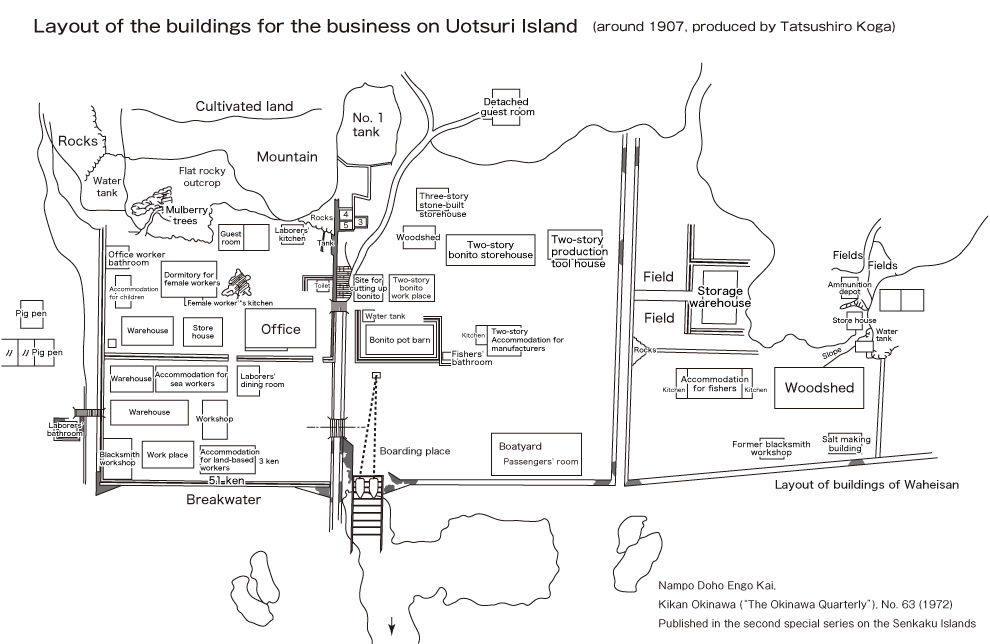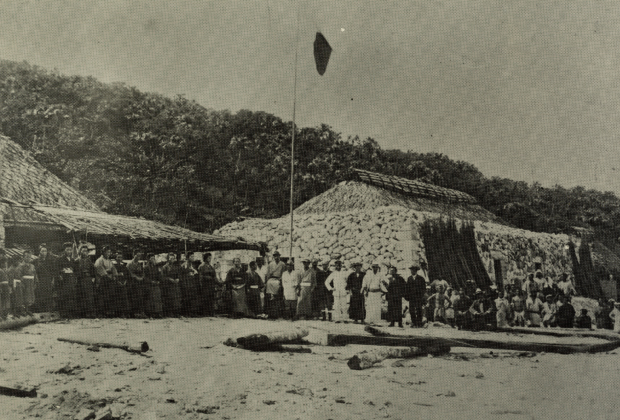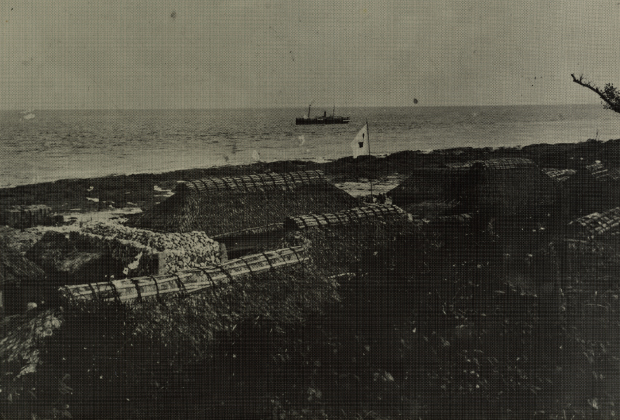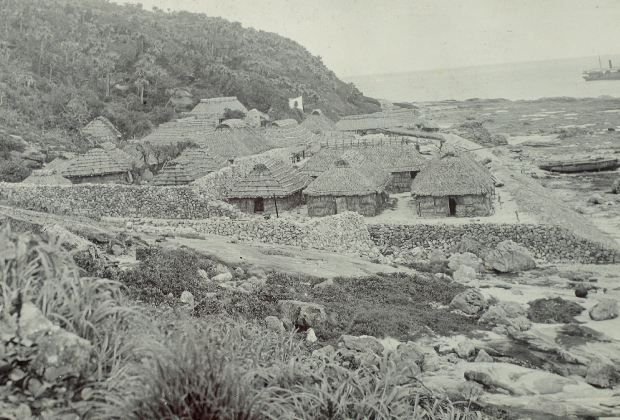In the following year of January 1895, when the Senkaku Islands were incorporated into Japan’s territory, Tatsushiro Koga, seafood merchant from Fukuoka Prefecture, was permitted to use for free of rent the state-owned four islands, Minami-kojima, Kita-kojima, Uoturi and Kuba Islands, and engaged in the development of those islands.
In March 1897, Tatsushiro Koga dispatched 35 workers to the Senkaku Islands to start the project of collecting feathers of albatross and the development of the islands.
Invaluable photographs taken in 1900 show that buildings had already been erected and development was already ongoing by that time.
A growing village on Kuba Island
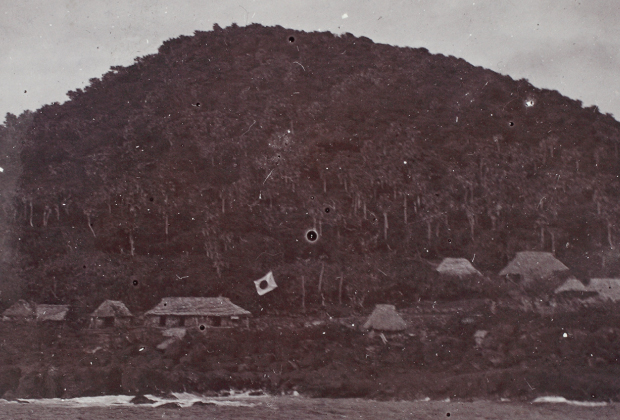 Repository: National Archives of Japan
Repository: National Archives of Japan
The development of the Senkaku Islands started from Kuba Island. At the time, several houses had already been erected, and researchers (Mikinosuke Miyajima) who visited to conduct surveys and studies on the island called this “Kogamura (Koga Village).” The photograph shows a raised Japanese flag in Koga Village, perhaps to welcome the ship carrying Miyajima and his companions.
Seabirds fill the skies above Kita-kojima Island
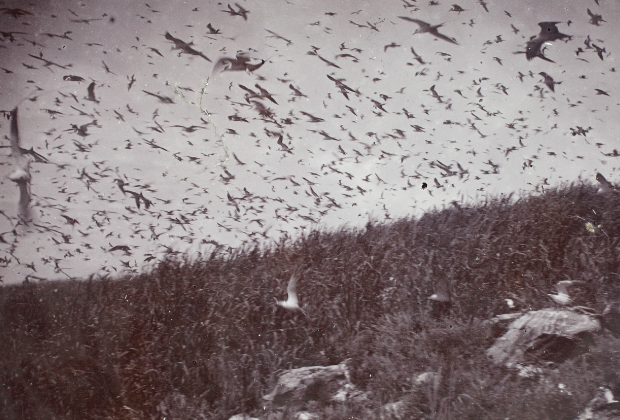 Repository: National Archives of Japan
Repository: National Archives of Japan
A flock of seabirds (sooty terns) covering the ground and filling the skies. Koga used a semi-taxidermy process to turn this bird into a source of material for decorating hats, and mass exported it to Europe.
Minami-kojima Island as a fishery base
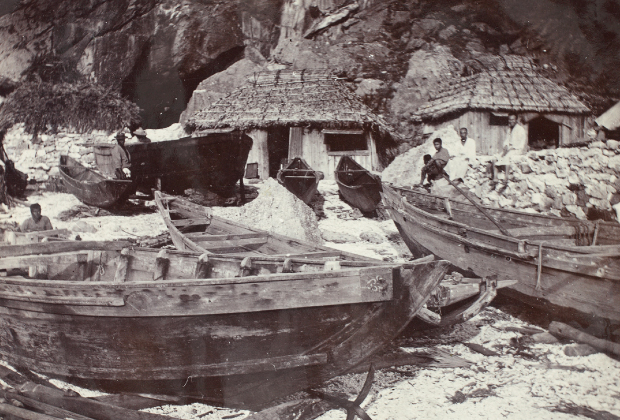 Repository: National Archives of Japan
Repository: National Archives of Japan
Small huts and stone walls had already been built here, believed to be a location near the beach on the northwestern tip of the island. The three boats in the foreground are mainland Japanese style boats, and a small Okinawan style “Sabani” boat can be seen on the left in the background.
Road development on Minami-kojima Island
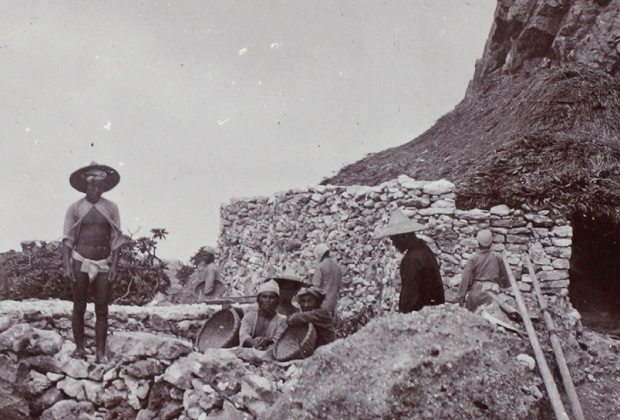 Repository: National Archives of Japan
Repository: National Archives of Japan
This is believed to be a photograph of the same location of Minami-kojima shown on the left, but taken from a different angle. It shows a road being built. A person is seen near the center-rear of the photograph holding a basket known in Okinawa as “baki,” presumably for transporting the nearby rocks. These were exported in large quantities.






